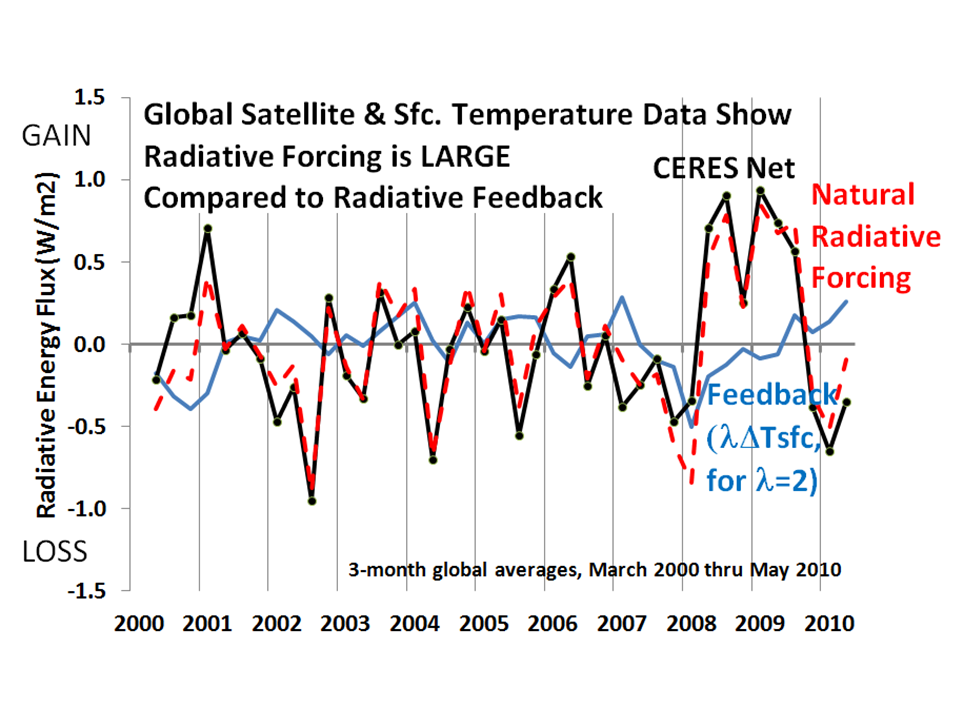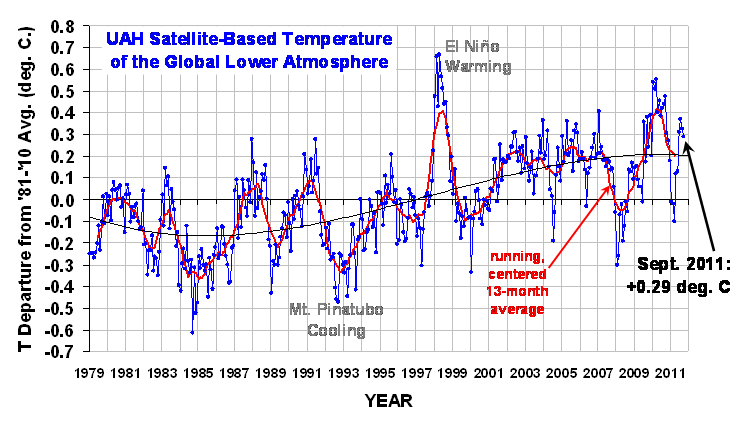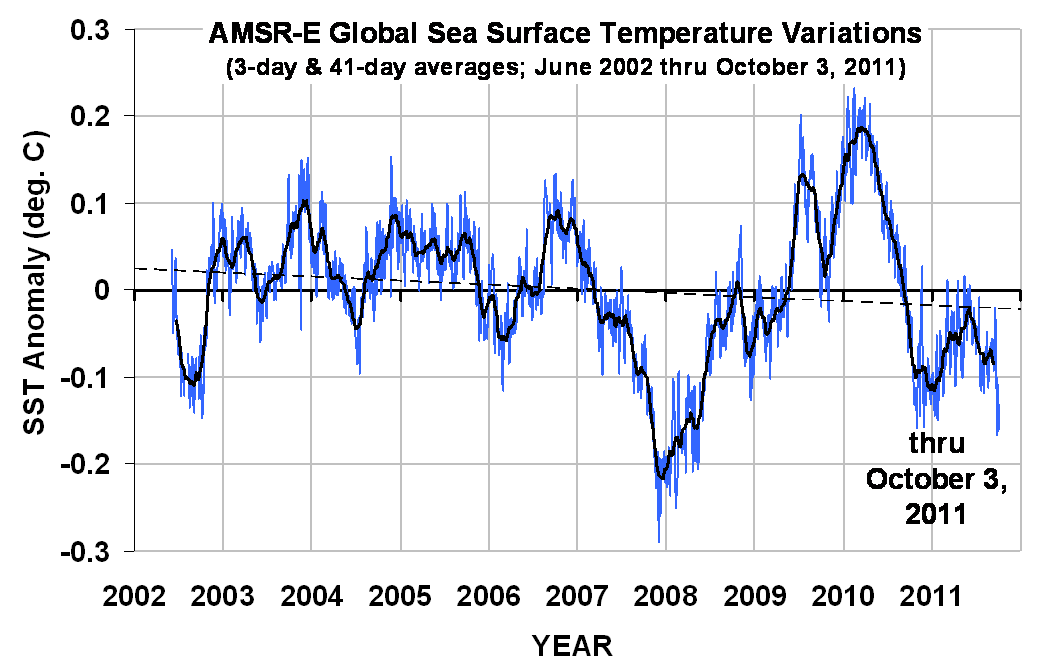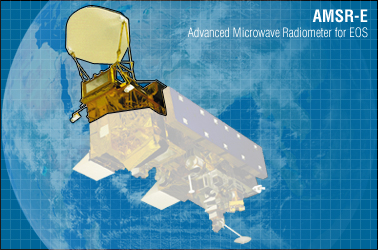I will be revealing some of the evidence we will be submitting to Geophysical Research Letters (GRL) in response to Dessler’s paper claiming to refute our view of the forcing role of clouds in the climate system.
To whet your appetite, here is a draft version of one of the illustrations (click for the large version). It clearly shows the large discrepancy which exists between the IPCC climate models and satellite observations in the way they show the Earth shedding excess radiant energy in response to warming. This is central to question of how much warming can be expected from anthropogenic greenhouse gas emissions, because the less radiant energy the model’s shed per degree of warming, the more the models continue to warm.
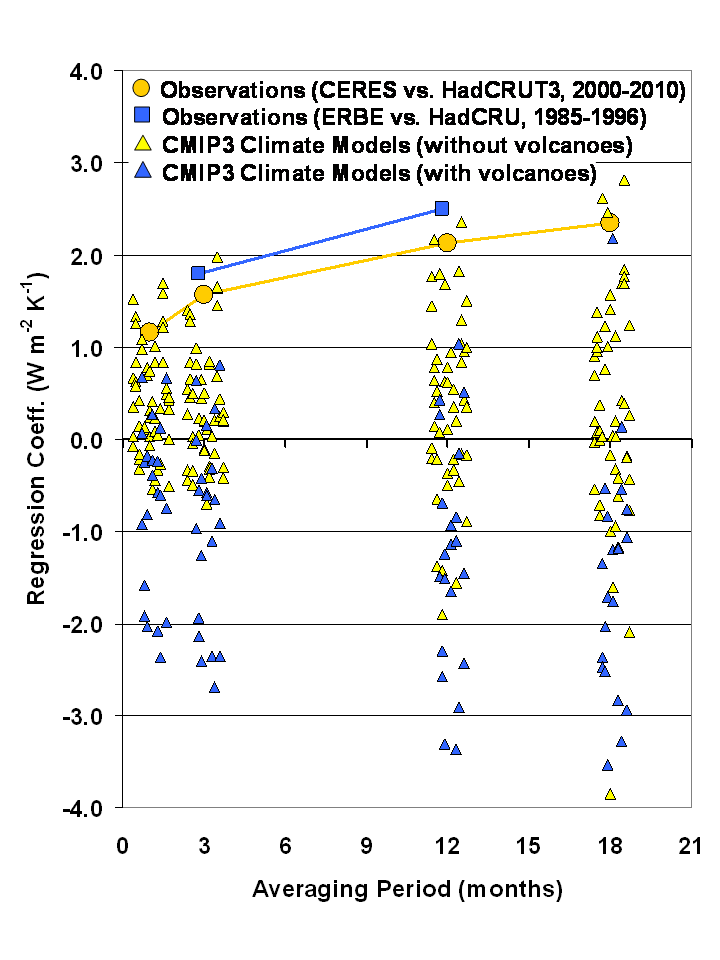
The figure above represents 700 years of data (50 years each from all 14 models we have analyzed), and all 20 years of global Earth radiant energy budget data which exists from 2 satellite periods. Each point plotted represents an estimate of how much energy is lost (gained) by the Earth per degree of warming (cooling) during year-to-year climate variations in the individual decades.
Results for various averaging times are shown: Monthly (used by Dessler), 3 and 12 monthly (used by Forster & Gregory, 2006 J. Climate in their analysis of ERBE data, results of which are plotted as blue squares above), and 18 months used by only us in our analysis of the CERES data. We decided showing results for multiple averaging times is better than arguing with our critics over what averaging time is best. (If there are two options, A and B, and we chose A, our critics would claim there was an Exxon-funded conspiracy to exclude B.)
Of course, this evidence also supports one of the main conclusions of our Remote Sensing paper published earlier this year: there is a large discrepancy between the IPCC climate models and observations. That’s the paper which led to the resignation of the journal’s Chief Editor, and an apology from that journal to Kevin Trenberth for even publishing our paper (never mind it was peer reviewed by researchers who also publish on the subject).
The Effect of Volcanoes in Models versus Observations
One new twist that emerges from the above figure comes from the blue triangles, representing the model decades involving large episodic radiative forcing events by volcanic aerosols, compared to decades without volcanic forcing (yellow triangles). These blue triangles clearly show that a low bias in the regression-diagnosed feedback parameter tends to occur when time-varying radiative forcing is present (The volcanoes were Mt. Agung in the 1960s, El Chichon in the 1980’s, and Mt. Pinatubo in the 1990s. 7 of the 14 models included strong, episodic volcanic forcing, as independently decided from data presented by Forster & Taylor, 2006 J. Climate).
Furthermore, comparison of those blue triangles to the Pinatubo-influenced ERBE satellite data (blue squares, separately computed and previously published by IPCC-affiliated researchers) shows even a larger discrepancy than do the yellow (non-volcanic) triangles compared to the (orange) CERES data, which experience no major volcanic events. While one might argue that the CERES satellite measurements (orange circles) are not totally inconsistent with the yellow model triangles, the same cannot be said about the ERBE Pinatubo-influenced observations (blue squares) versus the blue model triangles. This has become a common IPCC defense of the climate models (“…well, the observations aren’t totally inconsistent with all of the models…”), as if this somehow constitutes validation of the climate models.
How Do the Results Jibe with Dessler (2010)?
Dessler (2010) in effect made a calculation representing the single orange circle on the far left. He interpreted it as evidence of positive cloud feedback (all of the IPCC models now exhibit positive cloud feedback), and indeed if I were to take that single circle, with its diagnosed net feedback parameter of only 1.2 W m-2 K-1, I might be inclined to agree it does, indeed, suggest positive cloud feedback.
But note how that single orange circle compares to the models (the triangles) when the exact same calculation is made from them. There is a significant discrepancy, which is seen to grow at the longer averaging times where the feedback signal is expected to more clearly emerge.
And the discrepancy appears to be the greatest in decades that experienced major volcanic eruptions.
Conclusion
The evidence keeps mounting that the Earth is more resistant to radiative forcing than are the climate models used by the IPCC to project future climate change. While it doesn’t actually prove the models are wrong in their projections of global warming, I don’t see how discrepancies this large can continue to be ignored.
If not for the public policy implications (which Dessler admits was the impetus for his 2011 paper criticizing our work), evidence as strong as that contained in the above illustration would be easily embraced by the climate research community. Maybe some day.
It will be interesting to see whether GRL rejects our paper out of hand. Maybe it would help if I joined the Union of Concerned Scientists. Hmmmm.
P.S….another tidbit for those following Dessler’s claim that clouds can’t cause climate change…
Dessler claims that changes in ocean temperature are way too large to be caused by clouds. Well, the year-to-year changes in Levitus global ocean heat content of the 0-700 m layer during the 2000-2010 satellite period of record yields a yearly standard deviation of 0.5 Watts per sq. meter for the energy required. In comparison, the yearly standard deviation of the global oceanic CERES satellite radiative fluxes is 0.3 Watts per sq. meter, which represents 60% of the energy required to cause the ocean temperature changes. Using any reasonable feedback parameter combined with the sea surface temperature variations yields only 0.1 Watts per sq. meter.
Thus, cloud variations (or maybe even natural water vapor variations?) can constitute an important natural forcing component of climate variability. And since it is our physical interpretation of observed climate variability that impacts our estimates of climate sensitivity, it also impacts our estimates of future global warming (aka climate change).
At this point, I suspect Dessler’s conclusions to the contrary are partly the result of a large amount of noise in temperature changes with time computed from short-term Levitus ocean heat content data.
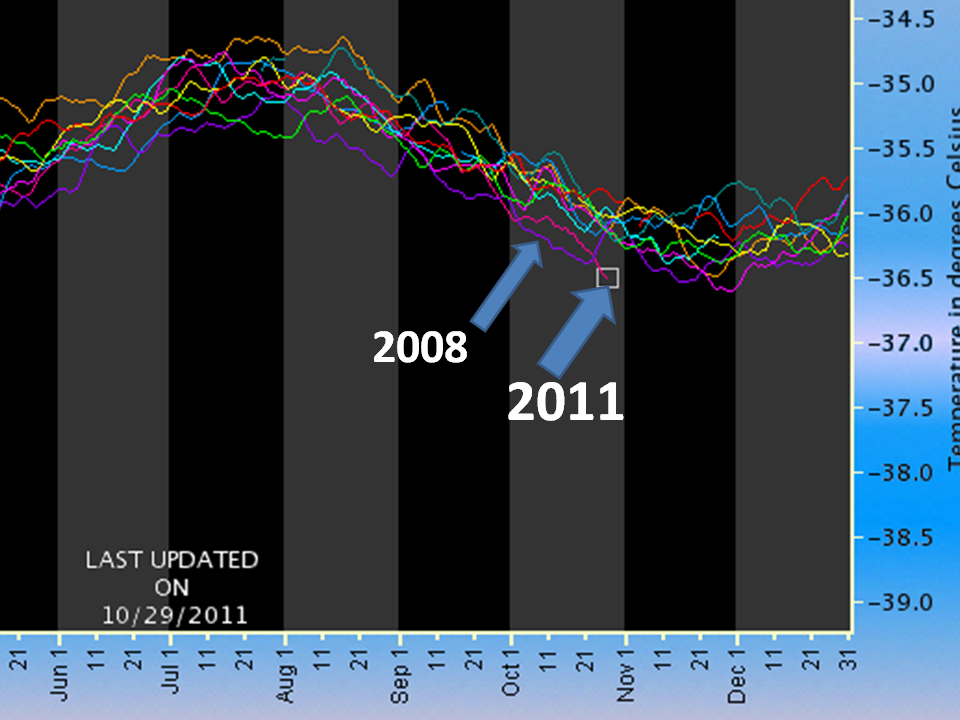

 Home/Blog
Home/Blog
